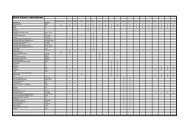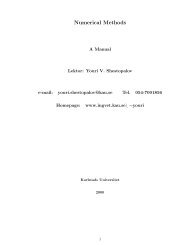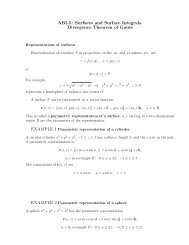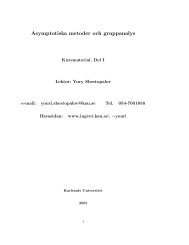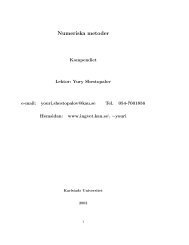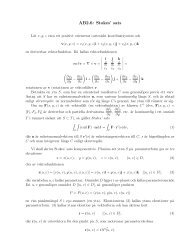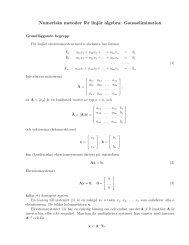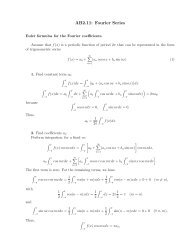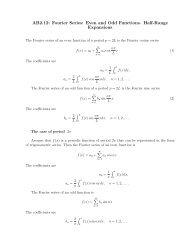You also want an ePaper? Increase the reach of your titles
YUMPU automatically turns print PDFs into web optimized ePapers that Google loves.
In some cases one can determine the sum of series (344) explicitly and obtain the solutionin a closed form. One can show that the approximation ϕ N (x) of the solution to equation (338)defined by (340) converges to the exact solution ϕ(x) as N → ∞ in the norm of space L (1)2 .Consider integral equation (339). Expand the kernel K(x, y) in the double Fourier–Chebyshevseries, take its partial sumN∑ N∑K(x, y) ≈ K N (x, y) = k ij T i (x)T j (y), (345)i=0 j=0and repeat the above procedure. A more detailed description is given below.Example 14 Consider the integral equation∫1−1(ln1|x − y| + xy) ϕ(x) dx√√1 = y + − y 2 , −1 < y < 1.1 − x2Use the method of solution described above and setto obtainy +ϕ N (x) = a 02 T 0(x) +N∑a n T n (x)n=1√1 − y 2 = 2 π T 0(y) + T 1 (y) − 4 πK(x, y) = T 1 (x)T 1 (y).∞∑k=1T 2k (y)4k 2 − 1 ,Substituting these expressions into the initial integral equation, we obtaina 02 ln 2T 0(y) +N∑n=1a nn T n(y) + π 2 a 1T 1 (y) = 2 π T 0(y) + T 1 (y) − 4 [N/2]∑ T 2k (y)πk=14k 2 − 1 ,here [ N 2 ] denotes the integer part of a number. Equating the coefficients that multiply T n(y) withthe same indices n we determine the unknownsa 0 = 4π ln 2 , a 1 = 2 π , a 2n+1 = 0, a 2n = − 8 nπ 4n 2 − 1 , n ≥ 1.The approximate solution has the formϕ N (x) = 4π ln 2 + 2 π x − 8 [N/2]∑ nπn=14n 2 − 1 T 2n(x).The exact solution is represented as the Fourier–Chebyshev seriesϕ(x) = 4π ln 2 + 2 π x − 8 π∞∑n=1n4n 2 − 1 T 2n(x).The latter series converges to the exact solution ϕ(x) as N → ∞ in the norm of space L (1)and its sum ϕ ∈ L (1)2 .652 ,



